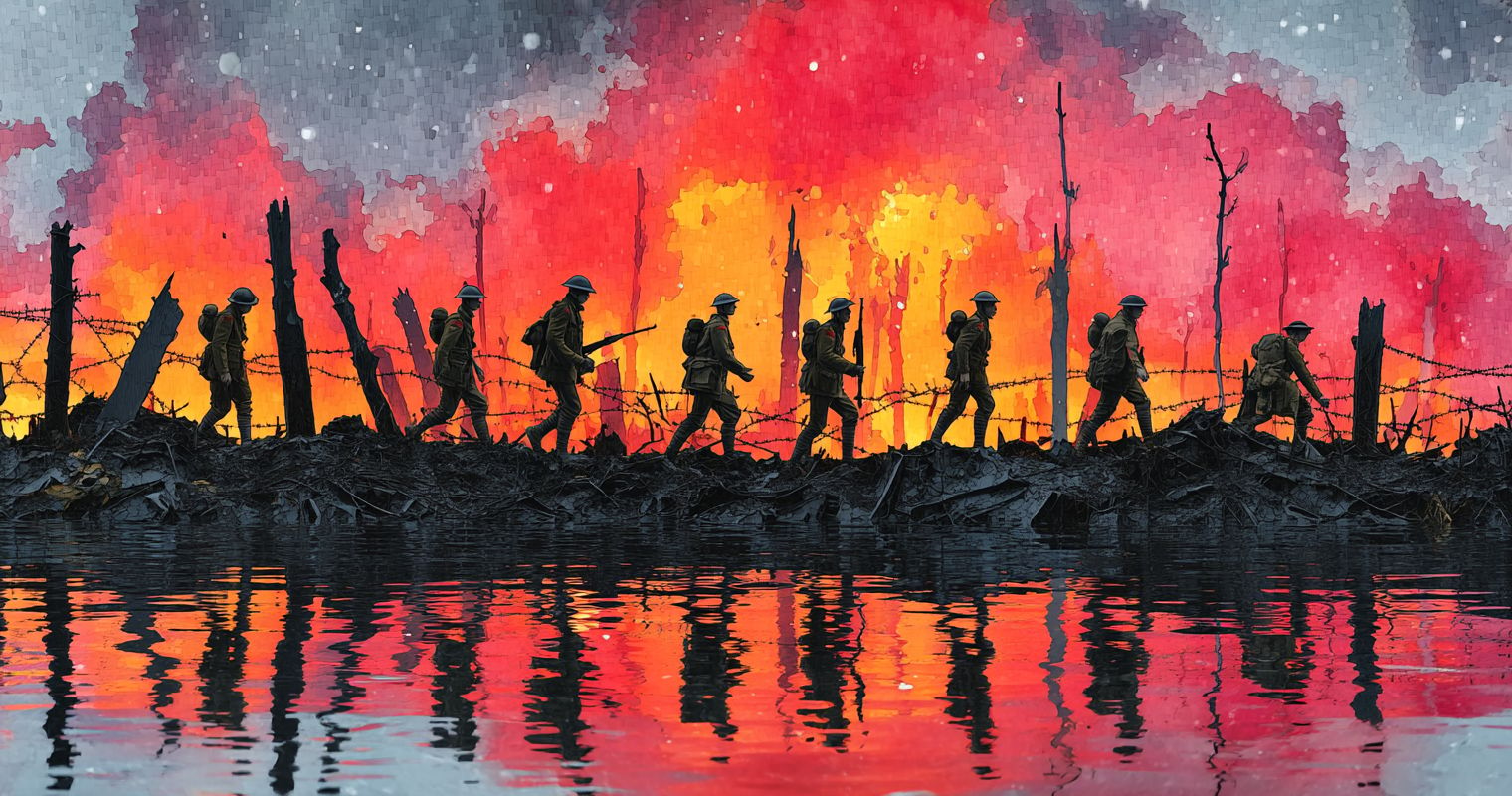By bananaking
What Was the Third Battle of Ypres?
The Third Battle of Ypres, better known to history buffs (and sore feet sufferers) as the Battle of Passchendaele, kicked off on July 31, 1917. British and Allied forces, including Australians and New Zealanders, launched a massive offensive in West Flanders, Belgium. The battlefield quickly became a terrifying mud pit, thanks to relentless rain and endless artillery shelling. The goal? Secure the high ground of Passchendaele ridge and knock the Germans off their stubborn perch.
Help out Historygonebananas by checking out our sponsor today:
This newsletter you couldn’t wait to open? It runs on beehiiv — the absolute best platform for email newsletters.
Our editor makes your content look like Picasso in the inbox. Your website? Beautiful and ready to capture subscribers on day one.
And when it’s time to monetize, you don’t need to duct-tape a dozen tools together. Paid subscriptions, referrals, and a (super easy-to-use) global ad network — it’s all built in.
beehiiv isn’t just the best choice. It’s the only choice that makes sense.
How Canadian Troops Took the High Ground in Passchendaele
Enter the Canadians in mid-October 1917, like soggy superheroes tasked with a nearly impossible job: capture the village of Passchendaele and the ridge around it. Led by General Arthur Currie, the Canadians meticulously prepared despite the waterlogged hellscape. With duckboards (wooden walkways) laid down to traverse the soggy quagmire, they launched a series of carefully planned attacks. Despite heavy rain, mud that swallowed men whole, and fierce German resistance, over several weeks they clawed their way forward and finally took the village on November 6, 1917.
The Human Cost: Casualties, Prisoners, and the Mud Wrestling of WWI
Passchendaele wasn’t just a mud bath — it was a nightmare. Over 200,000 casualties occurred on each side during the battle, including more than 15,000 Canadian soldiers killed or wounded. The Canadians also took about 24,000 German prisoners. Picture thousands of soldiers slogging through mud deeper than an average wading pool, under constant machine gun fire — the trench warfare equivalent of a messy, deadly mud wrestling match. As brutal as it was, Passchendaele has become a symbol of endurance and sacrifice, though much of the land changed hands again the following year.
What History Buffs and Geeks Can Learn from Passchendaele
Passchendaele teaches us that war isn’t just about guns and glory; it’s about grit, guts, and the grim determination of men in impossible conditions. It shaped Canadian military history and national identity, reminding us that strategic victories often come with devastating human costs. For historians, the battle offers lessons on how terrain, weather, and logistics can dictate the outcome of conflicts. Plus, it serves as a cautionary tale about the limits of offensive warfare in the face of modern defenses.
A Silly Historian’s Take: Mud Boots, Blood, and History Gone Bananas
If a silly historian narrated Passchendaele, they might say the battle looked less like a war and more like the world's worst mud wrestling competition. Forget tactical brilliance—soldiers just hoped to keep their boots from sinking forever while dodging shellfire and frostbite. The Canadians, the latecomers to this soggy showdown, emerged dripping wet but victorious, probably wishing someone had thought to supply umbrellas or maybe a giant mop. Passchendaele reminds us how absurdly difficult trench warfare was and why history sometimes needs a pinch of humor to stay sane.
How You Can Help Keep History Alive
Love history? Want to learn more and laugh more? Support HistoryGoneBananas by subscribing to our newsletter and following us on social media. Your support helps keep stories like Passchendaele fresh and fun—because history is serious business, but it can be seriously silly too.
FAQ
Q: What was the Third Battle of Ypres?
A: The Third Battle of Ypres, also called the Battle of Passchendaele, was a major WWI battle fought in 1917 in Belgium to capture key high ground from the German army.
Q: When did Canadian troops fight at Passchendaele?
A: Canadian forces joined the battle in mid-October 1917 and captured Passchendaele village on November 6, 1917, after weeks of intense combat.
Q: Why is Passchendaele famous in Canadian history?
A: The battle symbolized Canadian valor and sacrifice under horrific conditions and played a crucial role in shaping Canada's military identity.
Q: How many casualties were there at Passchendaele?
A: Over 200,000 casualties were recorded on each side, with more than 15,000 Canadian casualties and around 24,000 German prisoners taken.
Q: What lessons can historians learn from Passchendaele?
A: The battle teaches about the impact of weather, terrain, and strategy in warfare and highlights the human toll of WWI trench battles.
Q: How can I support history education and storytelling?
A: Subscribe to HistoryGoneBananas’ newsletter, follow our socials, and share our content to keep history engaging and accessible for everyone.


